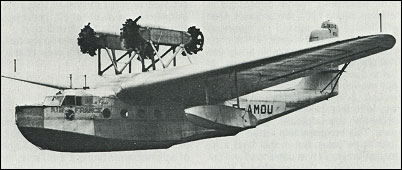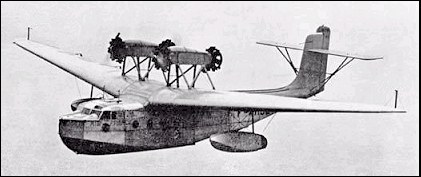 |
Liore-Olivier H-24, H-24-2, H-24-2/11929 |  |
| PASSENGER FLYING-BOAT | Virtual Aircraft Museum / France / Liore-Olivier |
 |
The result of prolonged design work by Benoit and his design team, the Liore-et-Olivier H-24.01 made its first flight in November 1929. A cantilever high-wing monoplane flying-boat, the H-24 had an enclosed pilot's cockpit, cabin accommodation for 10 passengers and a distinctive tall single fin and rudder, and was powered by two 373kW Renault 12Jb V-12 engines mounted in tandem on a pylon over the hull. This single aircraft was used purely for development, making a number of test and demonstration flights before being scrapped at Antibes in 1934. Developed from the H-24 was the H-24-2, of similar configuration but powered by four Gnome-Rhone radial engines mounted in tandem pairs over the thick-section wing. The first two of 14 production aircraft for Air France were H-24-2s, and the remaining 12 were H-24-2/1 aircraft with a revised engine installation. The first H-24-2 had flown for the initial time in March 1933, and before long all the machines were employed on Air France routes linking Marseilles with Athens, Tunis and Beirut. Ten aircraft were still operational in September 1939, and were flown under Italian supervision after the German occupation of southern France in November 1942. It is understood that most were scrapped shortly afterwards. The H-24-2 and H-24-2/1 had an enclosed crew cabin with side-by-side pilots' seats and a navigation and radio compartment; 15 passengers could be accommodated in a cabin beneath the wings, and there was a sizeable luggage and mail hold at the rear.
|  COMPANY PROFILE | |||||||||||||||||||||||||||||||||||||||||||||||||||
 |

|

